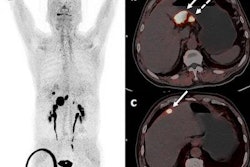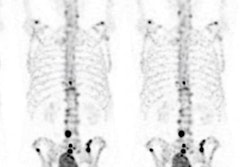Dear Molecular Imaging Insider,
Choosing the right imaging technique is particularly important in suspected cases of gastric cancer due to the lack of early signs and symptoms. F-18 FDG-PET/CT is often used to diagnose and stage gastric cancer, but it has a low detection rate for primary cases, especially in the early stages.
A new study posted by European Radiology has looked at whether a gallium-68-labeled fibroblast activation protein inhibitor radiotracer has a role in this area. Find out more in today's top article.
The German Cancer Research Center has a fine reputation when it comes to molecular imaging. A team from the Heidelberg facility has reported that whole-body PET/CT scans can help minimize radiation dose and significantly trim imaging time in melanoma patients.
In other news, researchers from Finland have evaluated the use of a shorter SPECT acquisition protocol on the performance of whole-body technetium-99m hydroxymethylene diphosphonate SPECT/CT in prostate cancer. They found the technique cut total acquisition time from 40 minutes to as low as 16 minutes without any loss of diagnostic performance.
Can 3D printing technology help to increase production of molybdenum-99 for medical imaging? Polish scientists think so. They secured a patent on 30 November from the European Patent Office. Read about their technique in our news report.
The only Europeans to receive a magna cum laude award from the judges in the poster hall at the RSNA meeting came from Nantes, France. The group's contrast-free molecular MRI method has shown promise in characterizing and differentiating brain neoplasms as well as malignancies in other body regions.
In this letter, we've included information about some of the many articles posted in the Molecular Imaging Community over the past month or so. Please take a close look at the full list below, and contact me when you have ideas for future coverage.




















